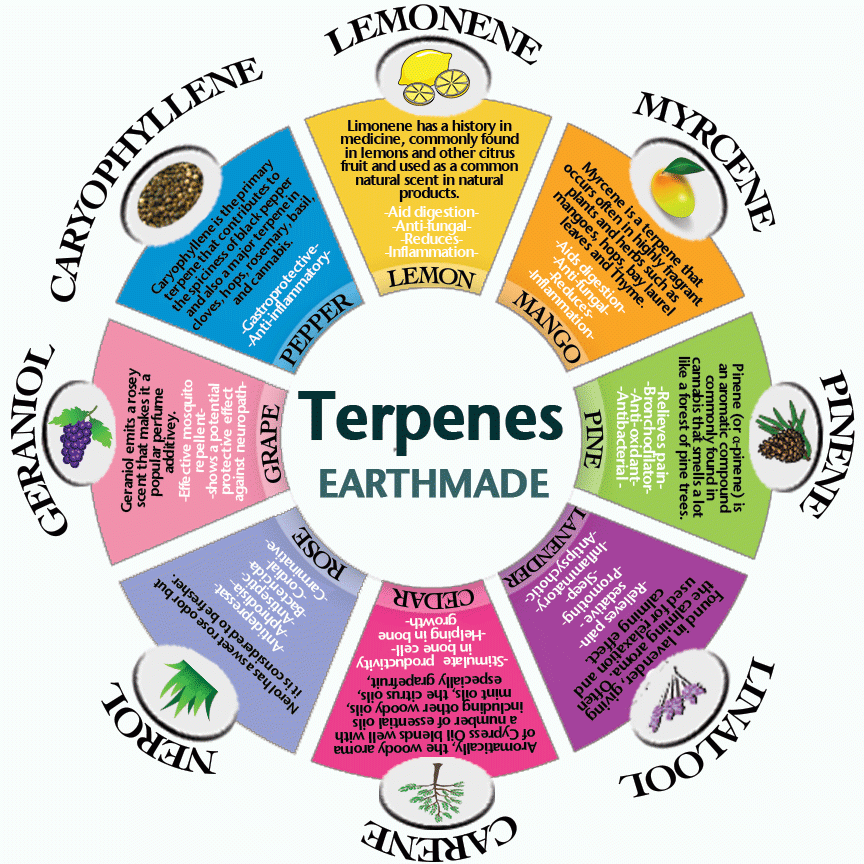Terpenes do more than provide flavor and aroma. They also support other cannabis molecules in producing desired effects. This is called the entourage or ensemble effect, and it’s the reason these aromatic compounds have become such a critical area of cannabis research.
Whether consuming cannabis for personal or medical use, we all go to cannabis for the same thing — the effect. The entourage effect presents a reality in which the right cocktail of cannabis compounds will prove more potent and effective than an isolated compound.
Terpenes and cannabinoids may either exaggerate or suppress one another’s effects, depending on which combination is present in a given cultivar and how an individual responds to it. Mounting scientific evidence suggests that terpenes play a considerable role in not only tempering the intoxicating effects of THC, but also creating synergy with phytocannabinoids and even increasing their therapeutic value.
A huge factor in the cannabis industry’s current terpene boom is the growing popularity of dabbing — the act of inhaling vaporized cannabis concentrates through a temperature-specific heating method such as a dab rig, e-rig, or vaporizer. Dabbing concentrates at high temperatures typically results in a smooth, tasty cannabis vapor-rich in flavors. What many dabbers may not be aware of is the possibility that terpenes produce toxic chemicals when heated to high temperatures.
According to a study from Portland State University, vaporizing terpenes at the high temperatures required for dabbing may produce the toxicants methacrolein and benzene, which have been linked to certain cancers. So, if you want to enjoy a flavorful dab without heating the terpenes to toxicity, dab at as low of a temperature as possible.


